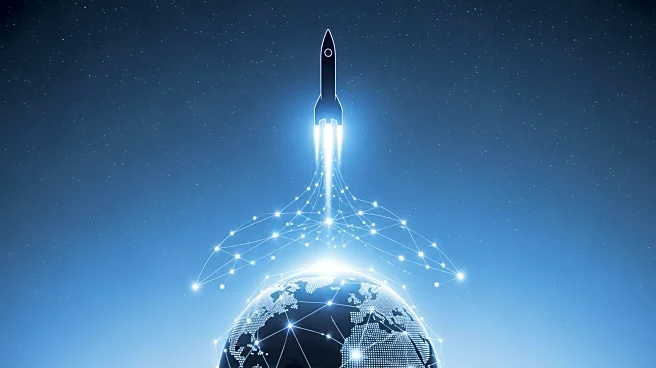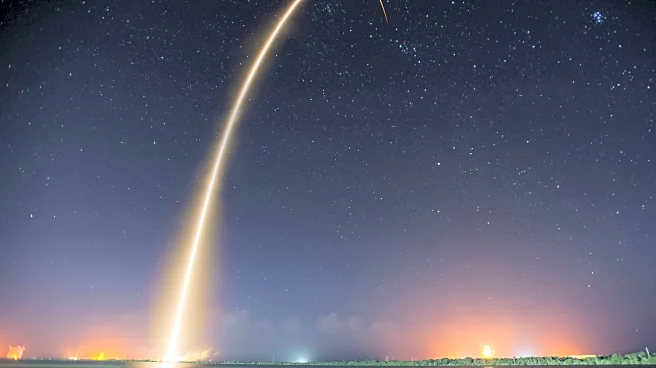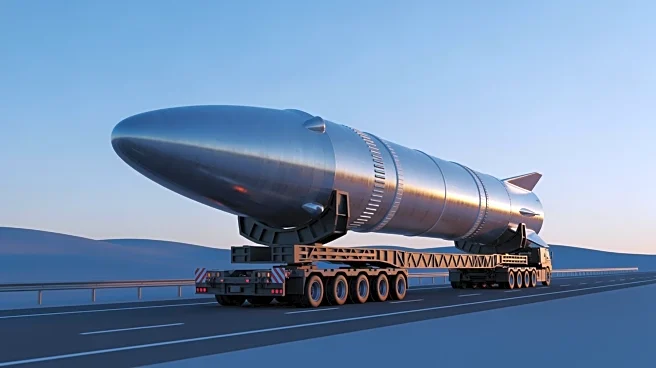What's Happening?
On November 18, 2025, SpaceX successfully launched 29 Starlink satellites aboard a Falcon 9 rocket from Cape Canaveral Space Force Station in Florida. This launch marks the 148th Falcon 9 mission of the year,
with 107 of these missions dedicated to expanding the Starlink satellite network. The rocket's first stage landed on the drone ship 'A Shortfall of Gravitas' in the Atlantic Ocean, demonstrating SpaceX's commitment to reusability. The upper stage deployed the satellites into low Earth orbit, increasing the number of operational Starlink satellites to over 9,000. This expansion aims to enhance global internet coverage, particularly in remote areas.
Why It's Important?
The continued expansion of the Starlink satellite network is significant for global internet accessibility, especially in underserved regions. By increasing the number of operational satellites, SpaceX is enhancing its ability to provide high-speed internet to areas lacking reliable connectivity. This development is crucial for bridging the digital divide, offering educational and economic opportunities to remote communities. Additionally, SpaceX's focus on reusability with the Falcon 9 rocket reduces launch costs and environmental impact, setting a precedent for sustainable space exploration.
What's Next?
SpaceX plans to continue its aggressive launch schedule to further expand the Starlink constellation. Future launches will likely focus on increasing satellite density to improve service quality and coverage. As the network grows, SpaceX may face regulatory challenges and competition from other satellite internet providers. The company will need to navigate international regulations and partnerships to maintain its market position and ensure global service availability.














